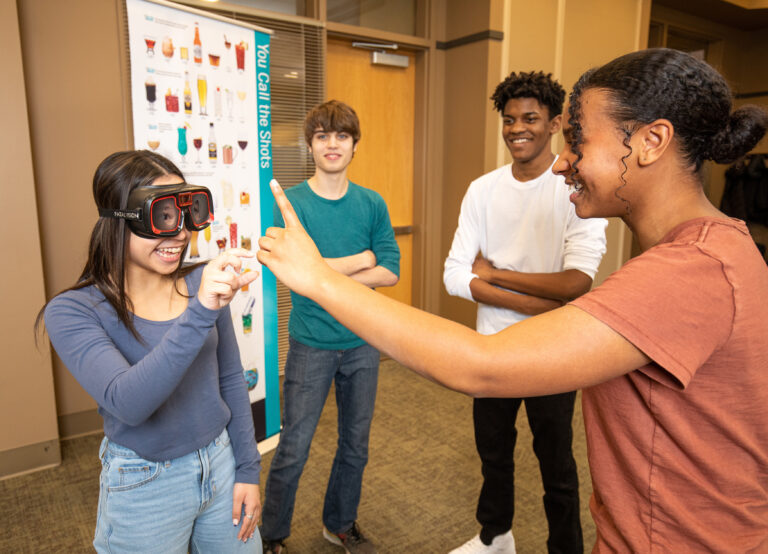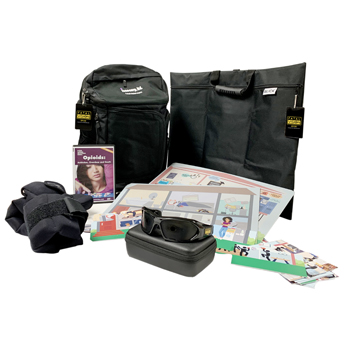
Driving Safety and Education Tools
Set your students up for success by utilizing the full driving safety toolkit available. Driving safety is an important part of any student or young adult education course. Safety

According to the Department of Health and Human Services, nearly two-thirds of all drug-related deaths in the last 20 years have involved opioids. But the general public typically isn’t aware of how severe the opioid epidemic has been and how imperative it is to educate students about the dangers of opioid abuse.
Here are four facts about the opioid epidemic to illustrate how important it is to raise awareness about opioid addiction:
Keep reading to learn about these facts and opioid abuse prevention.
When the COVID-19 pandemic began in March 2020, the effects were immediate and were felt far and wide; people of all races, religions, and ages were affected in some way by the sudden and complete halt to everyday life. These effects were especially felt by the millions of Americans struggling with opioid dependence.
Deaths from drug overdoses increased by an estimated 30% from 2019 to 2020, and roughly 80% of those deaths were related to opioids. In the early weeks and months of the pandemic, with extreme isolation and limited access to recovery resources, those struggling with opioid addiction suffered largely alone. Drug overdoses were on the rise even prior to March 2020, but greatly accelerated following the onset of the pandemic.
“The disruption to daily life due to the COVID-19 pandemic has hit those with substance use disorder hard,” said Former Centers for Disease Control and Prevention Director Dr. Robert Redfield.
Opioids are not a new phenomenon — “opium gum” was used to treat pain for soldiers during the Civil War. The Harrison Narcotics Act of 1914 regulated the production and use of opiate products, but by the 1980s, opiates had become an accepted treatment for chronic pain. The medical community certainly understands far more now about the addictive nature of opioids.
Unlike drugs such as cocaine and heroin, prescribed opioids are perfectly legal. Patients, therefore, believe they are safe to use without fully understanding their addictive nature. Initially used for chronic pain management, patients prescribed opioids often develop a strong dependence.
The question that has plagued educators and public health officials continues to be how to stop the abuse of opioids. Naloxone is a medicine that rapidly reverses an opioid overdose. According to the National Institutes of Health’s Institute on Drug Abuse, Naloxone can quickly restore normal breathing to a person if their breathing has slowed or stopped because of an opioid overdose.
However, we want to prevent opioid abuse before it reaches such a dramatic tipping point. Educating the public about the dangers of opioid abuse is paramount.
Opioid abuse prevention activities like the Fatal Vision Opioid Program Kit safely provides a firsthand understanding of the effects of opioid abuse. The Opioid Program Kit models how opioid abuse depresses the central nervous system, causing divided attention failure, contrast sensitivity impairment, a feeling of heaviness in the extremities, and nodding out. These impairments can negatively impact an individual’s health, quality of life, and safety.
By educating the public about the risks that come with opioid abuse and addiction, we can hopefully stem the tide of the opioid epidemic in the United States.
To learn more about Fatal Vision’s educational products and how you can use them to enrich how you teach about the dangerous effects of opioid abuse, visit our online store or contact our team today!
Innocorp is the pioneering developer of Fatal Vision® Goggles and other experiential learning tools designed to educate on the dangers of impairment and promote risk prevention. Innocorp provides impactful, hands-on resources used globally by law enforcement, educators, and safety professionals to demonstrate the consequences of substance use, risky driving, and other dangerous behaviors.
We’d love to online chat! We are available Monday-Friday from 8am-5pm (CST):
Or schedule a time for a consultation:

Set your students up for success by utilizing the full driving safety toolkit available. Driving safety is an important part of any student or young adult education course. Safety

Use laughter with Fatal Vision Goggles as a learning tool to encourage participation and understanding. Incorporating engaging tools like Fatal Vision Impairment Simulation Goggles into educational settings can be a

Learn how to share vital prevention information with your students. In recent years, the opioid crisis has escalated into a public health emergency, touching lives across all demographics and communities.
CUSTOMER SUPPORT
Buy America Act
Contact
GSA Customers
Returns
Shipping
Warranties
My Account
Login
Create an Account
INNOCORP HEADQUARTERS
500 S Nine Mound Road
P.O. Box 930064
Verona, WI 53593-0064
800-272-5023 Mon-Fri 8-5 CT
608-848-5558 Fax
©2025 Innocorp. All Rights Reserved